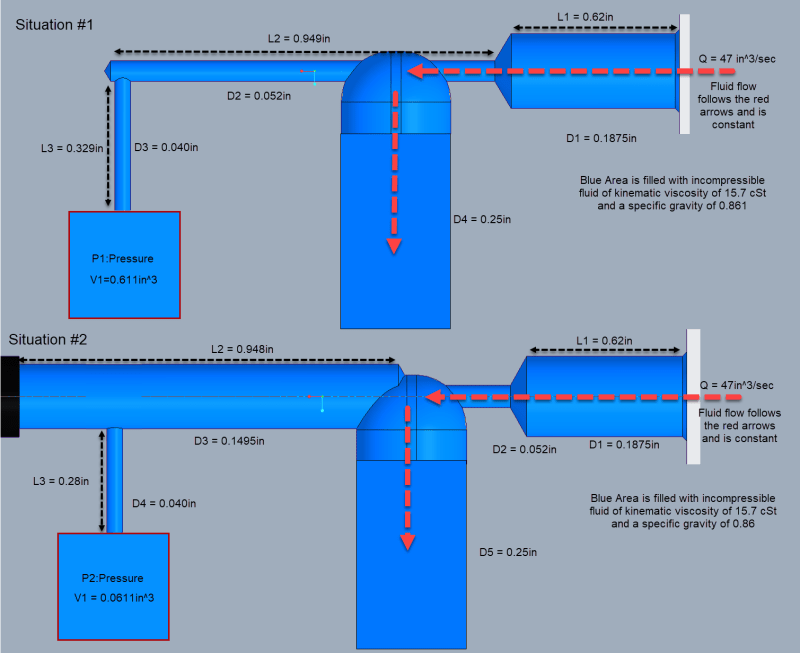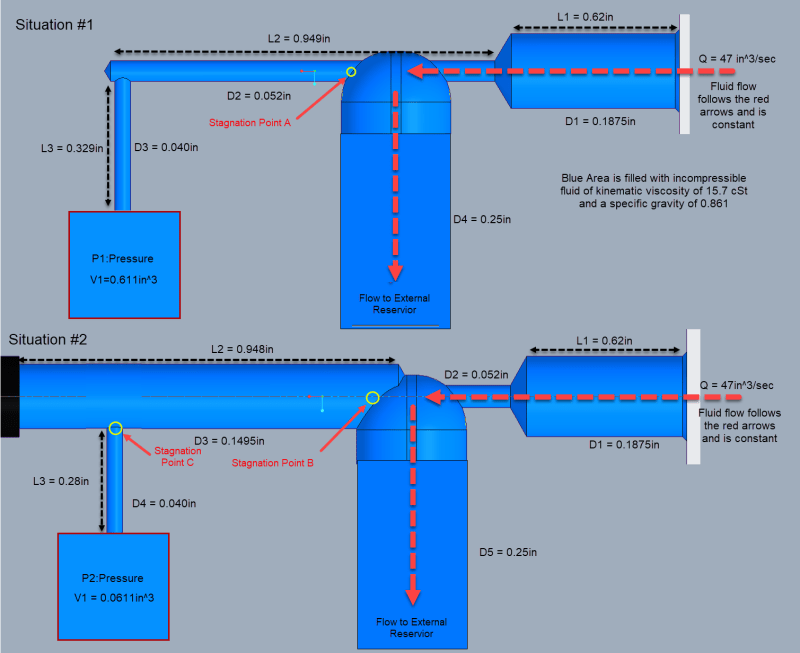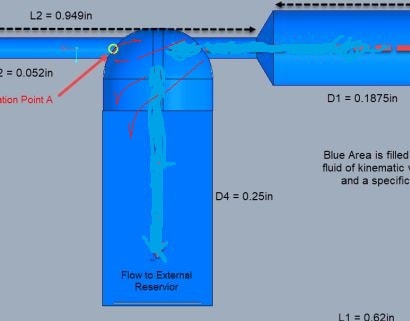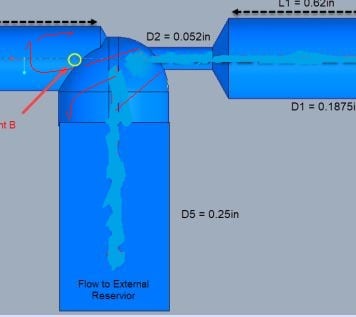TI-89
Mechanical
- Nov 10, 2020
- 3
So my question is in relation to fluid flow and pressure. In my pictures below you can see that i have two similar situations. Fluid flows in from a large reservoir at a constant rate through a control orifice. It follows the red arrow and flows around a 90 degree angle into a tube. Up to this point both scenarios are relatively the same. We have a pressure tap in both scenarios that differ in size.
Scenario #1 has a small long orifice (0.052in in diameter) that feeds another 0.040in hole in the manifold and then a small volume were the pressure is measured.
Scenario #2 has larger diameter orifice (0.1495in in diameter) that feeds the 0.040in hole into a similar small volume where pressure is measured.
What i would like to understand is: why is the pressure in situation #1 (P1) higher than the pressure in the situation #2 (P2)?
Wouldn't opening up the holes increase the pressure in volume V1? I have literally tried this by drilling out the tap in scenario #1 to make scenario #2, but it drops the pressure. I have even found that making the orifice smaller increases the pressure. What am i missing here?

Situation #1 Small Orifice Pressure Tap Situation #1 Small Orifice Pressure Tap
Situation #2 Large Orifice Pressure Tap Situation #2 Large Orifice Pressure Tap
Scenario #1 has a small long orifice (0.052in in diameter) that feeds another 0.040in hole in the manifold and then a small volume were the pressure is measured.
Scenario #2 has larger diameter orifice (0.1495in in diameter) that feeds the 0.040in hole into a similar small volume where pressure is measured.
What i would like to understand is: why is the pressure in situation #1 (P1) higher than the pressure in the situation #2 (P2)?
Wouldn't opening up the holes increase the pressure in volume V1? I have literally tried this by drilling out the tap in scenario #1 to make scenario #2, but it drops the pressure. I have even found that making the orifice smaller increases the pressure. What am i missing here?

Situation #1 Small Orifice Pressure Tap Situation #1 Small Orifice Pressure Tap
Situation #2 Large Orifice Pressure Tap Situation #2 Large Orifice Pressure Tap



